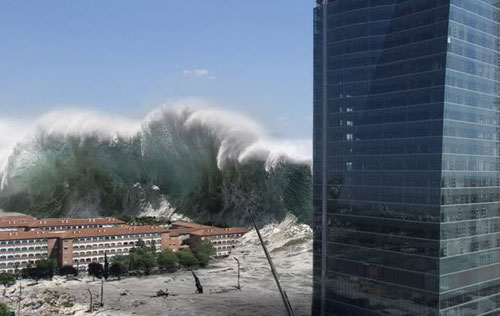What have countries done to deal with tsunamis?
For tsunamis, any preparation, every moment is very important. It's simply a phone call that can save hundreds of lives.
Early on September 29, the Pacific bottom earthquake caused massive waves of destruction to the Samoa Islands. American Samoa killed 11 people, destroyed villages and flattened many homes. The earthquake occurred at 6:48 local time, with a intensity of 8.3 richter. At 7:34 am, alerted from the Tsunami Warning System, a global sensor network managed by scientists, was launched. About 10 minutes later, tsunami waves of nearly 15 feet hit the mainland. How have countries prepared to deal with tsunamis?
The damage that the earthquake caused is worse than that. Laura Kong, director of the International Tsunami Information Center in Hawaii, said Samoa, thanks to this preparation, saved countless lives in a disaster last week.

(Photo: Skyscrapercity)
For tsunamis, any preparation, every moment is very important. In 2004, an earthquake off the coast of Indonesia caused successive tsunamis in the Indian Ocean, killing more than 230,000 people. While the Pacific has a tsunami warning system installed since 1965, it is only after the incident occurs that the countries of the Indian Ocean install a system of their own. Kong said the 2004 disaster was among the 95% of local tsunamis that struck after just 1 hour of the earthquake. In just such a short time, people could not respond promptly, even if they were aware of the imminent danger.
The tsunami warning system in the Pacific works in conjunction with testing centers in Japan, Alaska and Hawaii - where the center is located. This system uses earthquake information from seismic stations - part of the global seismic network managed by the United States. The US National Geographic and Scientific Organization with financial resources, data and tools contributed by countries around the world.
Kong also said that these centers themselves could spend hundreds of millions of dollars just to install with money from support countries as well as from organizations like the Red Cross and the United Nations. Once an earthquake occurs, this system immediately analyzes the location and intensity of the earthquake. If the earthquake has parameters consistent with the same conditions that cause tsunamis, they will give warnings to countries in danger .
However, once the alert is sent to the local authorities, the safety of the people depends on the infrastructure of each country. Developing countries may lack communication systems to receive these alerts in the most effective way. Mr. Kong said some countries already have good infrastructure, but some other developing countries do not yet have this.
Mr. Brian Carlson, World Vision's director of emergency and humanitarian affairs, is taking technical measures to improve the infrastructure that is already in the alarming state of these countries.
Mr. Carlson, who came to India shortly after the 2004 tsunami, said he noticed that two residential areas are only a few miles apart - a place where many people survive and others are completely destroyed. . The reason is that the surviving village was warned by a Singaporean simply by a phone call after he saw the threat of tsunami on television. He said: ' It's simply a phone call that has saved hundreds of lives .'
- Vietnam has a scenario to deal with tsunamis
- New agreement on global climate
- Why can tsunamis destroy all obstacles?
- China: Rich countries need to help poor countries improve their climate
- America tried to create a tsunami bomb
- Tsunamis cannot be predicted
- What causes earthquakes and tsunamis?
- G8 meeting to discuss climate change
- What is a tsunami? When does a tsunami occur?
- Floating houses avoid tsunamis
- Vietnam: Also need to be wary of tsunamis
- Action plan to protect elephants
 Is the magnetic North Pole shift dangerous to humanity?
Is the magnetic North Pole shift dangerous to humanity? Washington legalizes the recycling of human bodies into fertilizer
Washington legalizes the recycling of human bodies into fertilizer Lightning stone - the mysterious guest
Lightning stone - the mysterious guest Stunned by the mysterious sunset, strange appearance
Stunned by the mysterious sunset, strange appearance